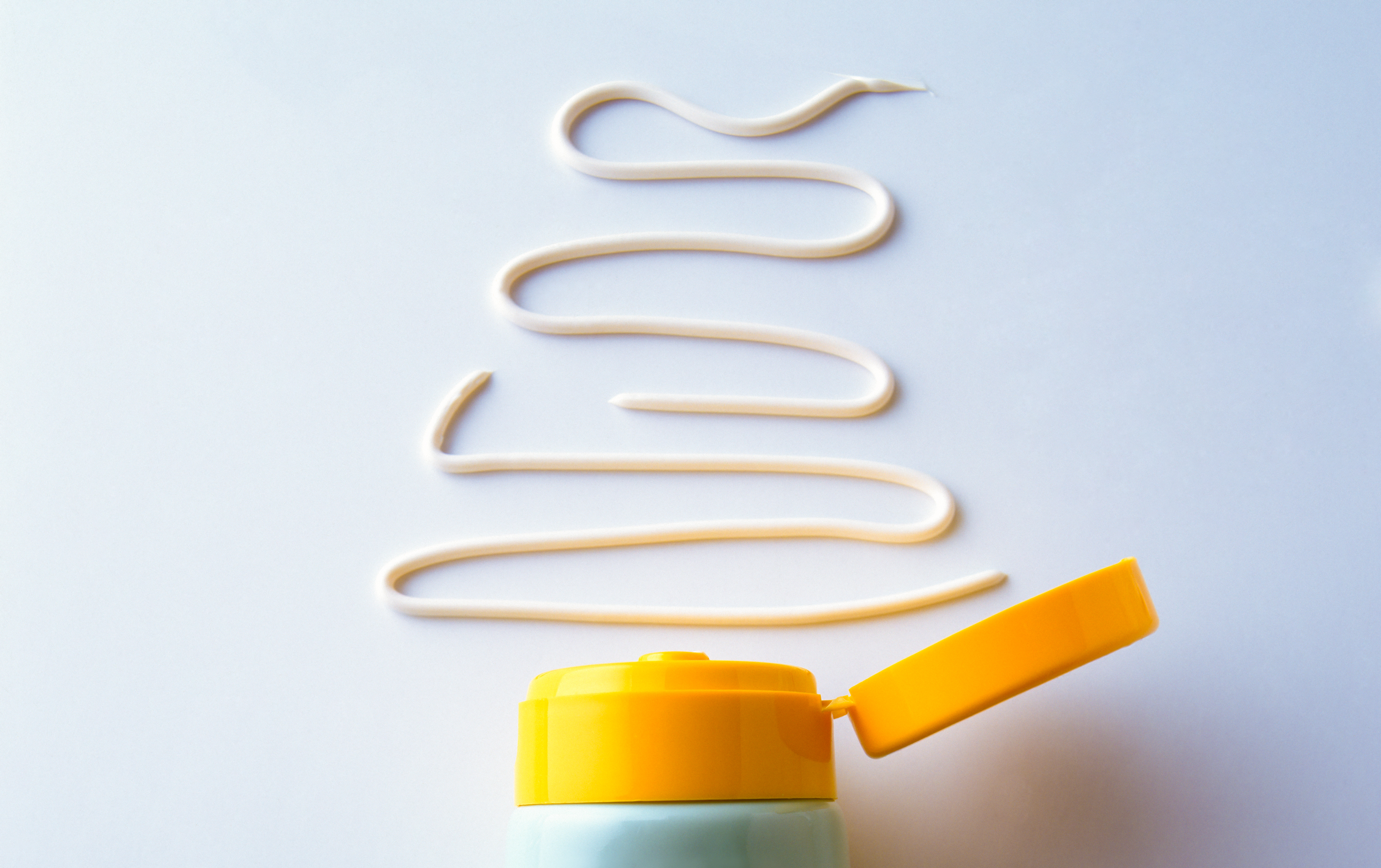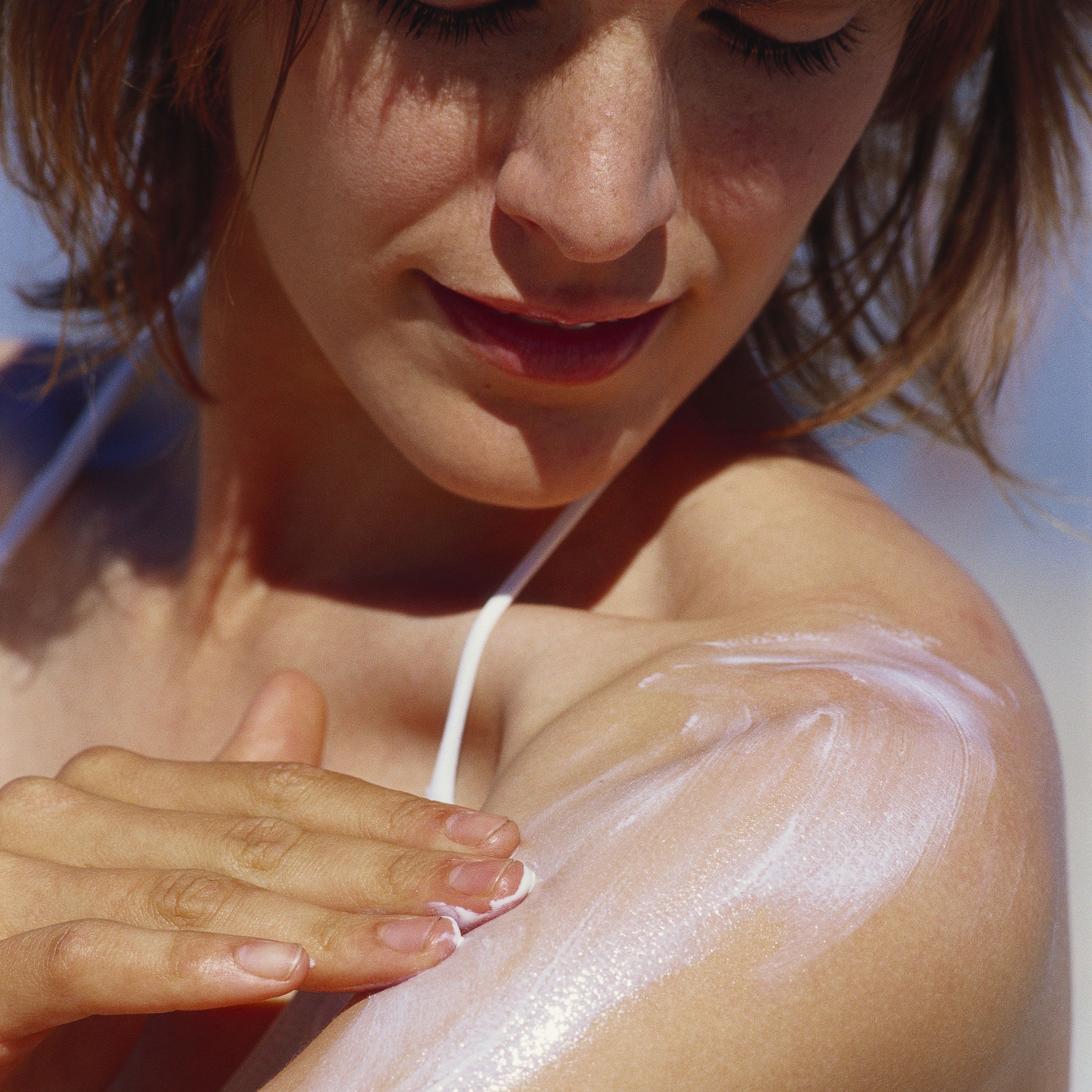
Sun cream. Grab a bottle of factor 15 from Boots at the airport, whack it on when you hit your sun lounger and you’re all set. Right?
Wrong.
“Applying sunscreen seems simple enough, but if you’re not careful, improper use can leave your skin vulnerable and exposed,” warns Daniel Isaacs, formulation and development director at Medik8.
A survey by the British Association of Dermatologists in 2016 identified that 80% of people are failing to adequately apply sunscreen.
Even the most cautious sun worshippers may be putting themselves at risk with their suntan-lotion technique, but armed with the right knowledge you can ensure you’re thoroughly protected…
1. Applying sunscreen in the sun
 It’s important to apply enough sunscreen to make sure you’re fully protected (Thinkstock/PA)
It’s important to apply enough sunscreen to make sure you’re fully protected (Thinkstock/PA)
“Any application in direct sunlight increases evaporation by up to 60%, reducing protection,” says Abi Cleeve, MD Ultrasun UK. “Put it on at least 15 minutes before you go out. Get a good coverage and let it sink in.”
2. Ditching the SPF on cloudy days
“Even when it’s not particularly sunny, sunscreen is still required,” says Seena Seka, sun care specialist for Linco Care Ltd. “When the sky is overcast, UV radiation levels are still at 80% of their normal levels.”
3. Checking the weather forecast not the UV index
“The temperature can be deceptive – a breeze can keep you cool, but it doesn’t affect UV levels. Look up the UV index for your area to make sure you’re using protection when necessary, especially between 11am and 3pm, when the sunshine is at its strongest,” Seena advises.
4. Missing sensitive spots
“The most common site for men to develop a malignant melanoma is on the chest or back. For women it’s more likely on the legs,” Abi says. So slather on liberally all over.
5. Skipping your lips
“Lips are often forgotten and with no natural shade like the lower lip, the upper lip area in particular shows ageing from sun damage more quickly. Help prevent damage from the elements with the Ultrasun Ultralip SPF 30 [£6, M&S],” Abi recommends.
 Women and men are more likely to develop malignant melanoma on different parts of their bodies (Thinkstock/PA)
Women and men are more likely to develop malignant melanoma on different parts of their bodies (Thinkstock/PA)
6. Not topping up enough
“Consumers should also be mindful of the activities they perform whilst wearing sunscreen. Sweat, exposure to water, towel drying and anything that rubs against the skin can significantly diminish your level of protection,” Daniel says. “To receive a sunscreen’s full protective properties, you should be topping up your application every two hours.”
7. Not checking the expiration date
An Asda survey revealed that 57% of Brits are wearing out-of-date sunscreen. “Check your product for shelf life, the average is just 6-12 months,” Abi says.
8. Not slapping on enough product
“It is recommended that a minimum quantity of 35ml is sufficient for all-over body protection. If you reduce the required amount, then the level of SPF protection will decrease significantly,” Seena warns. That’s about two tablespoons. “As a rule, you should always use an SPF15 product or higher at the start of sun exposure. You can always choose a lower factor later,” he adds.
9. Only using SPF on holiday
“There is a common misconception that sunscreen is only necessary in the summer months, or worse still, just for the beach or pool,” Daniel warns. “The truth is UV rays are everywhere, and whether you’re enjoying a summer stroll or taking refuge from winter winds near a brightly lit window, you’re still being exposed to damage. Daily, year-round application is essential if you wish to shield skin from photodamage.”


Comments & Moderation
Readers’ comments: You are personally liable for the content of any comments you upload to this website, so please act responsibly. We do not pre-moderate or monitor readers’ comments appearing on our websites, but we do post-moderate in response to complaints we receive or otherwise when a potential problem comes to our attention. You can make a complaint by using the ‘report this post’ link . We may then apply our discretion under the user terms to amend or delete comments.
Post moderation is undertaken full-time 9am-6pm on weekdays, and on a part-time basis outwith those hours.
Read the rules hereLast Updated:
Report this comment Cancel